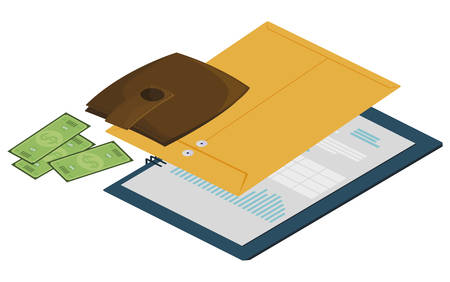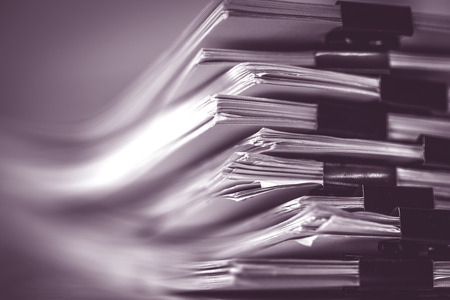Introduction to Evidence in UK Insurance Claims
In the context of the UK insurance industry, evidence and documentation play a pivotal role in determining the outcome of claims. When a policyholder submits a claim, insurers require robust and credible evidence to validate the circumstances and losses described. The process is guided not only by the specific terms set out in each insurance policy but also by stringent regulatory standards established by bodies such as the Financial Conduct Authority (FCA). Insurers in the UK expect claimants to provide clear, timely, and accurate documentation that substantiates their claim. This expectation is reinforced by industry best practices and legal requirements, which are designed to ensure fairness, transparency, and efficiency throughout the claims process. Understanding what constitutes valid evidence, how it should be presented, and why it matters is essential for anyone engaging with the UK insurance sector—whether as an individual claimant or a business. By maintaining high standards of documentation and evidence gathering, both insurers and policyholders can help safeguard against fraud, streamline assessments, and achieve fair outcomes in accordance with UK regulatory expectations.
2. Key Types of Evidence Required
When making an insurance claim in the UK, providing the right evidence is crucial for a successful and timely settlement. Insurers require specific documentation to verify the validity of claims and to assess liability and losses. Below is a breakdown of the most commonly requested types of evidence, along with examples relevant to UK insurance procedures.
Commonly Required Documentation
| Type of Evidence | Description | UK Example |
|---|---|---|
| Photographs | Visual proof of damage, loss, or incident scene | Images of car damage after a collision on the M25; photos of water damage in a London flat following a burst pipe |
| Witness Statements | Written accounts from people who saw the event | A neighbour’s statement describing a burglary in Manchester; bystander testimony for a slip-and-fall incident at a Tesco store |
| Police Reports | Official documentation from law enforcement detailing incidents such as theft, assault, or accidents | A Metropolitan Police report for a stolen bicycle; Thames Valley Police documentation for a road traffic accident |
| Receipts & Invoices | Proof of ownership or value for lost or damaged items, or costs incurred as a result of an incident | An Argos receipt for a stolen laptop; invoice from an emergency plumber following flood damage in Birmingham |
| Medical Certificates & Reports | Evidence of injury, illness, or incapacity related to the claim, typically provided by NHS or private healthcare providers | A GP’s certificate confirming time off work due to injury; hospital discharge summary after an accident on public transport in Edinburgh |
The Importance of Detail and Authenticity
UK insurers place strong emphasis on the authenticity and completeness of submitted evidence. It is important that all documents are legible, dated, and where possible, independently verifiable. For example, photographs should include time stamps when available, police reports must include official reference numbers, and medical documentation should be signed by licensed practitioners. Inadequate or incomplete evidence can result in delays or rejections, increasing both personal and financial costs for policyholders.

3. Documenting Your Claim: Best Practices
Proper documentation is fundamental to the success of any insurance claim in the UK. Adhering to best practices not only strengthens your case but also ensures compliance with British legal and industry standards. Below, we outline effective methods for gathering, organising, and safeguarding evidence, as well as maintaining the accuracy required by insurers.
Gathering Relevant Evidence
The first step is to collect all pertinent documents and materials related to your claim. In the UK, this often includes:
- Official Reports: Police reports for theft or accidents, fire brigade assessments, or medical records.
- Photographic Evidence: Clear photos or videos of damages, injuries, or the incident scene from multiple angles.
- Receipts and Invoices: Proof of purchase or repair estimates to substantiate your losses.
- Witness Statements: Contact details and written accounts from anyone who observed the incident.
Organising Your Documentation
Organisation is key for both clarity and efficiency during the claims process. Standard UK practice suggests:
- Create a chronological file—either digitally or in hard copy—of all documents relating to the incident and claim process.
- Label each item clearly (e.g., “Car Damage Photo – 12 March 2024”).
- Keep a record of all communications with insurers, including emails and letters.
Securing Original Documents
Original documents are often required by British insurers as proof of authenticity. To avoid issues:
- Store originals in a safe location; use certified copies if you must submit paperwork.
- If sending documents by post, opt for recorded delivery and keep receipts as proof of postage.
Ensuring Accuracy and Consistency
Mistakes or inconsistencies can delay your claim or result in denial. To meet UK legal standards:
- Double-check dates, amounts, and personal information on all forms and supporting evidence.
- Avoid altering original documents; if corrections are necessary, provide a clear explanation alongside supporting evidence.
By following these best practices when documenting your claim, you align with common expectations within the UK insurance sector. This approach not only expedites processing times but also increases the likelihood of a favourable outcome.
4. Pitfalls and Common Mistakes
When submitting insurance claims in the UK, many claimants inadvertently undermine their own cases by making avoidable documentation errors. Insurers frequently report that these mistakes cause delays, reduce payouts, or even result in outright claim rejections. Understanding these common pitfalls—and knowing how to address them—can greatly improve the likelihood of a successful claim.
Analysis of Frequent Documentation Errors
| Error Type | Description | Typical Impact | Prevention Strategy |
|---|---|---|---|
| Missing Receipts | Failure to provide receipts for claimed items or services | Claim value reduced or disallowed for unverified items | Always retain and submit original or digital copies of receipts |
| Incomplete Claim Forms | Leaving sections blank or omitting required details | Delays as insurers request additional information | Double-check forms; use insurers checklists before submission |
| Lack of Supporting Evidence | No photos, police reports, or witness statements provided when needed | Doubt over legitimacy of claim; possible rejection | Gather all relevant evidence before submitting the claim |
| Mismatched Information | Discrepancies between documentation and claim details (e.g., dates, amounts) | Increased scrutiny; requests for clarification; slower processing | Ensure consistency across all documents and statements |
| Poor Quality Documentation | Submitting illegible scans/photos or damaged documents | Insufficient proof; repeated requests for clearer copies | Use clear, high-resolution images or originals where possible |
Insurer Feedback: Real-World Insights from the UK Market
UK insurers have identified trends based on thousands of claims:
- Banks and utility providers: Statements are often needed to prove residence or ownership. Outdated or incomplete statements are a common error.
- E-receipts vs. paper receipts: Digital records are usually accepted but must clearly show purchase date, item details, and seller information.
- Timeliness: Submitting claims long after an incident can lead to difficulty in obtaining credible evidence. Most insurers recommend immediate reporting and documentation collection.
- Cultural Note: In the UK, third-party corroboration (such as independent witnesses) is highly valued in disputed claims, especially for car accidents and property damage.
Avoiding Common Pitfalls: Cost-Benefit Perspective
The time invested in gathering thorough documentation is minor compared to potential financial losses from denied or delayed claims. By systematically organising and verifying evidence before submission, claimants can save both money and stress. Always consult your insurer’s guidance notes and consider contacting them directly if unsure about specific documentation requirements.
5. Verification and Validation Process
Once initial evidence and documentation are submitted in support of an insurance claim, UK insurers employ a structured verification and validation process. This procedure ensures that all claims meet legal, regulatory, and policy-specific requirements before any settlement is considered. The process typically begins with a thorough review of the submitted documents by an assigned claims handler or adjuster, who will check for completeness, accuracy, and consistency with the details provided at the time of policy purchase.
If any discrepancies or gaps are identified, insurers may formally request additional documentation to substantiate the claim. For example, they might ask for original receipts, proof of ownership, maintenance records, or photographs if not already provided. In cases involving property or complex liability claims, insurers often arrange for an independent assessor or loss adjuster to visit the site in question. These assessment visits help verify the extent of damage or loss, ensuring that the claim aligns with policy terms and conditions.
The timelines involved in this verification process can vary depending on the complexity and nature of the claim. Straightforward claims with complete evidence may be validated within a few days to a couple of weeks. However, more complex cases requiring further investigation or third-party reports can extend the process to several weeks or even months. Throughout this period, UK insurers are expected to keep claimants informed about progress and any further information required under guidelines set by the Financial Conduct Authority (FCA). Ultimately, robust verification protects both the insurer from fraudulent activity and ensures that genuine policyholders receive fair settlements.
6. Cost and Consequences of Poor Documentation
Poor documentation in UK insurance claims can have far-reaching financial repercussions for policyholders. Insufficient or incomplete evidence not only risks claim delays but can also result in outright rejections, undermining the value of the insurance policy itself.
Claim Delays: Time Is Money
When a claim is submitted without robust supporting documentation—such as receipts, photographs, or detailed incident reports—insurers are obliged to request further information or clarification. This additional administrative back-and-forth prolongs the settlement process. For individuals and businesses alike, these delays may mean living with unresolved damages or losses, potentially incurring extra out-of-pocket expenses while awaiting resolution.
Claim Rejections: Direct Financial Loss
If evidence remains inadequate despite follow-ups, insurers may reject the claim altogether. In the UK context, where regulatory standards require fair assessment, lack of documentation often leaves the insurer with no option but to deny payment. This scenario results in direct financial loss to the policyholder, who must then cover costs that could have been mitigated by a successful claim.
Increased Premiums and Long-Term Impact
Poorly managed claims that lead to disputes or rejections can affect future insurability. Insurers may view claim history as indicative of risk, resulting in higher premiums at renewal or even difficulties securing cover elsewhere within the market.
Legal Expenses and Administrative Burdens
Disputed or rejected claims sometimes escalate to formal complaints with the Financial Ombudsman Service or even legal proceedings. Policyholders face not only additional costs in seeking redress but also significant time and stress invested in resolving these issues.
The Hidden Costs: Opportunity and Reputation
Especially for businesses, delayed or denied claims can disrupt operations, damage customer trust, and erode reputation. The opportunity cost of diverted resources and lost business opportunities adds an intangible yet real burden.
In summary, inadequate documentation does more than slow down an insurance claim; it exposes policyholders to unnecessary financial risk, increased costs, and potential long-term consequences. Proper evidence gathering is not just best practice—it is a fundamental safeguard within the UK insurance landscape.
7. Conclusion: Maximising Your Claim Success
In summary, the successful navigation of UK insurance claims hinges on a thorough understanding of the role evidence and documentation play throughout the process. As a UK policyholder, you should be proactive in keeping detailed records and supporting materials, ranging from photographs and receipts to written communications and official reports. These not only serve as proof of loss but also help clarify circumstances, reducing disputes with insurers.
Key Takeaways
- Timely Action: Report incidents promptly to your insurer, ensuring all details are fresh and accurate.
- Comprehensive Evidence: Gather a wide range of documentation, including photos, repair estimates, police or incident reports, and witness statements.
- Clear Communication: Maintain written records of all communications with your insurer and relevant third parties.
- Policy Awareness: Review your policy terms regularly to understand coverage limits and exclusions specific to UK law and practice.
Practical Steps for Policyholders
- Organise your documents in both physical and digital formats for easy access during the claims process.
- If unsure about required evidence, consult your insurer or a professional adviser—clarity early on can save time and reduce errors.
- Keep an ongoing log of claim progress, noting dates, names, and outcomes of each interaction.
The Value of Diligence
By following these steps, UK policyholders can significantly improve their chances of a swift and fair claims settlement. Comprehensive evidence not only supports your position but also demonstrates to insurers that you are organised and credible—a factor that can influence the speed and outcome of your claim.
Final Thought
A robust approach to evidence gathering is not just best practice; it is essential in the context of UK insurance. By integrating these habits into your routine, you protect your interests, minimise disputes, and maximise the likelihood of receiving the compensation you deserve.


